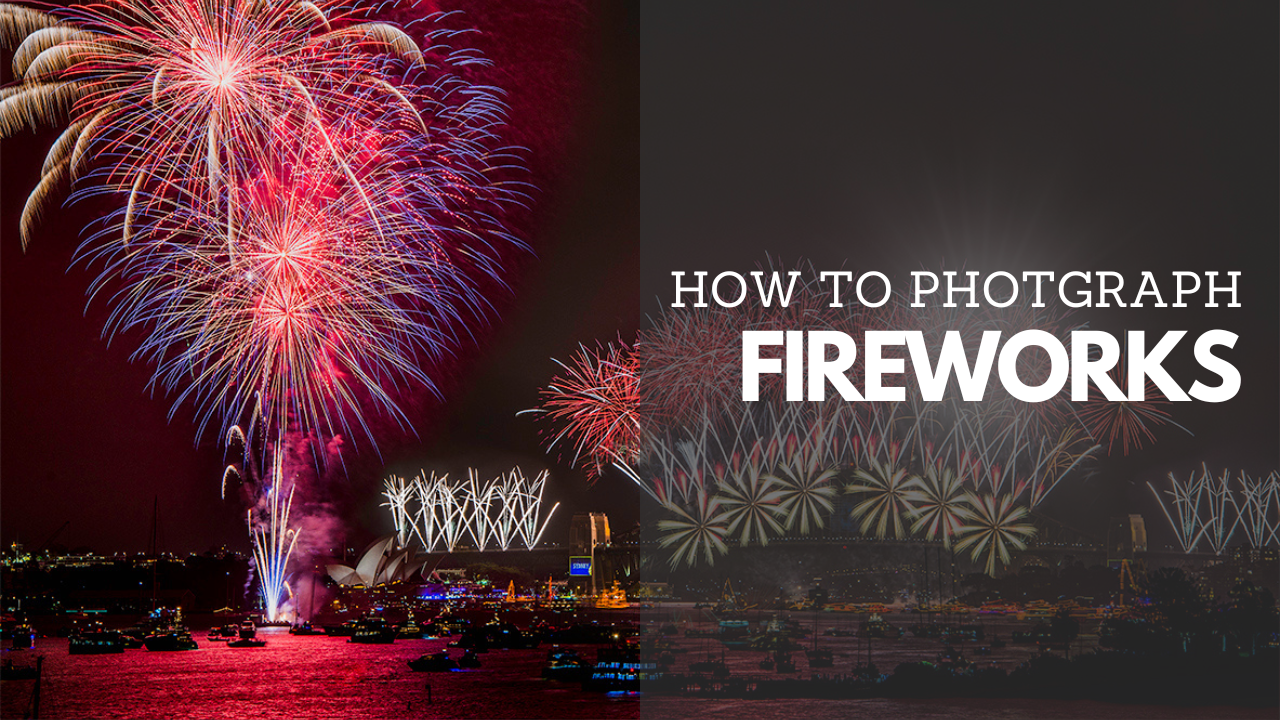How to photograph fireworks

Photographing fireworks can be a challenging but rewarding experience for both new and experienced photographers. While automatic modes can sometimes produce good results, taking control of your camera settings and understanding the rules of light in the night sky can help you create truly spectacular photographs. Here are some tips on how to photograph fireworks:
Turn off your flash
This is a no-brainer - turn your flash off. Shooting with a flash will have no impact on your shots except to trick your camera into thinking it needs a short exposure and unnecessarily light the foreground.
Use a tripod
Make sure your camera is completely still by using a tripod. This will ensure any blur in your shots is from the movement in the sky that you want to capture and not the shake of the camera.
Use a remote release or the self-timer
To ensure your camera is completely still during fireworks shots, consider investing in a remote-release device. If you don't have one, you can use the self-timer, but this will be more random as you can't choose when to shoot.
Be aware of your frame and use a zoom lens
I usually set up before the show for a wide shot and then zoom for tight shots on individual patterns during the show. So, I recommend a good-quality zoom lens with image stabilization which will give you more options for zooming and shooting during the display. It doesn't have to be a huge telephoto lens, but one with a decent range.
Understand the auto settings on your camera
Auto settings tend to set themselves for low light at night and hence choose a slow shutter speed to compensate. Be aware of this when shooting in auto and learn to use manual for more flexible and faster shots.
Manual Settings
When it comes to manual settings, there is no one group of settings that will work for all fireworks displays because there are so many variables. However, when adjusting your settings, consider the following:
Shutter speed: Experiment with a slow shutter speed to get that trailing blur effect but don't keep your shutter open too long. Fireworks are bright and it doesn't take too much to overexpose them.
Bulb mode: I sometimes shoot fireworks in 'bulb' mode which allows me to keep the shutter open for as long as I hold down the shutter. This technique works well with a remote shutter release.
Aperture: Generally speaking, a mid-range aperture (i.e. f8-f16) gets the job done. Many people think you need to compensate and add light, but this is not usually the case with fireworks.
ISO for capturing fireworks: Set it low to ensure the cleanest shots possible, 100 might work because as I mentioned even though the night is dark, the fireworks are bright. If you are trying to get a fast shutter speed to capture crisp light patterns you might need to bump it up.
Capturing fireworks with a DSLR camera can be a challenging but rewarding experience.
Here are some tips to help you get the best results:
- Research and plan ahead: Before the show, find out what to expect and plan accordingly. Knowing the length of the display and the types of fireworks used can help you decide when to start zooming and experimenting with different settings.
- Scope out the location and claim your spot: Arrive early to choose the best location and set up your tripod. This will also give you time to choose your master frame and make any necessary adjustments.
- Watch your horizons: Keep an eye on the horizon and use a spirit level to ensure your camera is straight. This will help you avoid cutting out any patterns in the sky when straightening the image later.
- Check your images periodically: During the display, check your images every two to three minutes and adjust the settings if necessary. This will help you avoid under or over exposure.
- Don't forget the foreground: Experiment with shots that include silhouettes of people and other elements in the foreground. This can add an interesting juxtaposition to the fireworks.
- Use your eyes and feel the moment: Use a remote release to capture the fireworks without having to constantly check your camera. Also, pay attention to the story behind the fireworks, such as the festival or celebration, the crowd's reaction, the weather, and other unique elements.
In conclusion, photographing fireworks requires a bit of experimentation and an understanding of your camera's settings. Keep these tips in mind and practice your technique, and you'll be on your way to capturing spectacular photographs of fireworks.
Download your free copy of my Landscape Photography Camera Setup Checklist
Even the most experienced photographers can ruin a photo with one small mistake. You spend all that time setting up your tripod and camera, but forget to check one thing and the photo is ruined.


